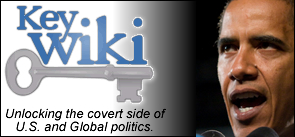New ASI TV Shows – 12/02/20
By: Cliff Kincaid | America’s Survival Moral Objections to COVID-19 Vaccines Bishop Joseph...
Read MorePosted by TMH | Dec 2, 2020 | Authors, Cliff Kincaid, News, Politics |
By: Cliff Kincaid | America’s Survival Moral Objections to COVID-19 Vaccines Bishop Joseph...
Read MorePosted by TMH | Dec 2, 2020 | Authors, News, Politics, Publius Huldah |
By: Publius Huldah The following shows what the State Legislatures and each Branch of the federal...
Read MoreBy: Tabitha Korol Hayaat loves her grandmother, Sitti, who always reminisces and sings about her...
Read MoreCitizens Commission on National Security Roger Aronoff of the Citizens Commission on National...
Read MoreBy: Yoram Ettinger | CCNS The depth and durability of the 400-year-old biblical roots among most...
Read More
My beloved husband,
GARRY HAMILTON,
passed away
on September 24th, 2022.
I will love you always.

